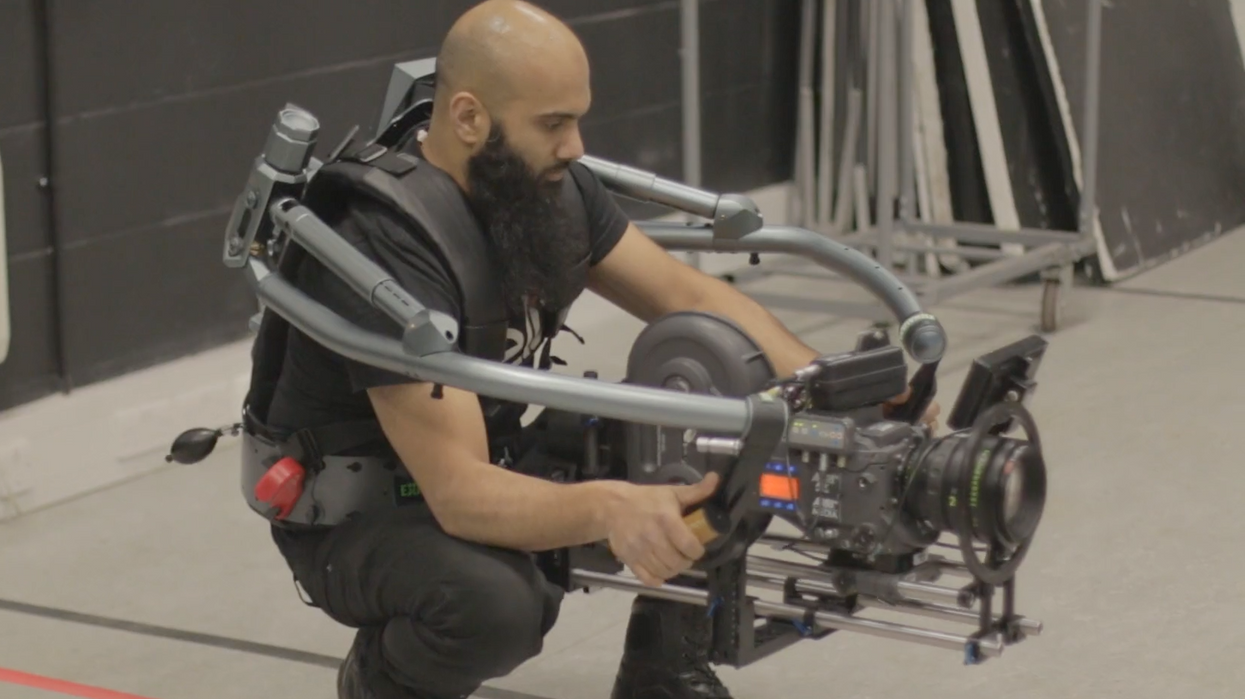Watch: New Tech Meets Old with a Film Camera in a Gimbal
With the double helix from Letus, flying 35mm in a gimbal is now a reasonable activity.

When Letus announced the 60 lb. weight capacity of the Helix at NAB this year, flying 35mm film cameras was one of the first applications to come to mind. While much of the industry has moved to digital capture, there are still many projects shot on 35mm film, and the ability to bring the mobility of a gimbal to the world of 35mm is an exciting one.
In this video from Mr. Helix, we see a Letus Helix rigged with an ARRI 235, using an Eko Mk1 exoskeleton from L'aigle to help support the weight. As opposed to a Steadicam, where the arm helps provide some of the stabilization, the primary benefit of an exoskeleton is helping to hold the weight, while the gimbal provides the stability.
It's no surprise that the 235 is the camera used for the test: at 7.7 lbs. for the body, it's among the lightest modern 35mm cameras ever produced, and comes with a whole host of features to make it easier to fly. One of the most important is the vertical magazine: as you shoot your way through a roll of film, the feed side gradually loses weight, while the take-up side gains weight. If the magazine is horizontal or even diagonal, this results in a gradual change in the position of the center of gravity, which can throw off the delicate balance of a Steadicam or gimbal. With the 235's vertical magazine, the center of gravity still moves, but mostly up and down, with just a little front to back, requiring less compensation as you shoot through the mag.
Have any of you used the Helix? How did it treat you?












